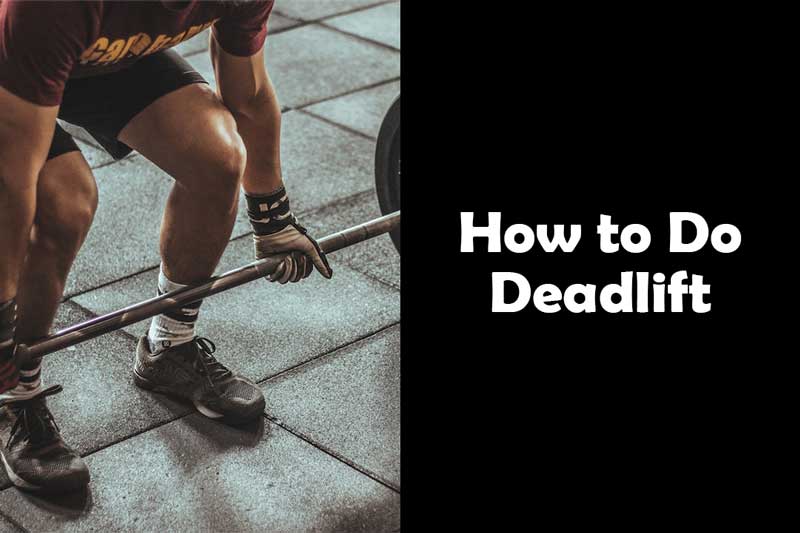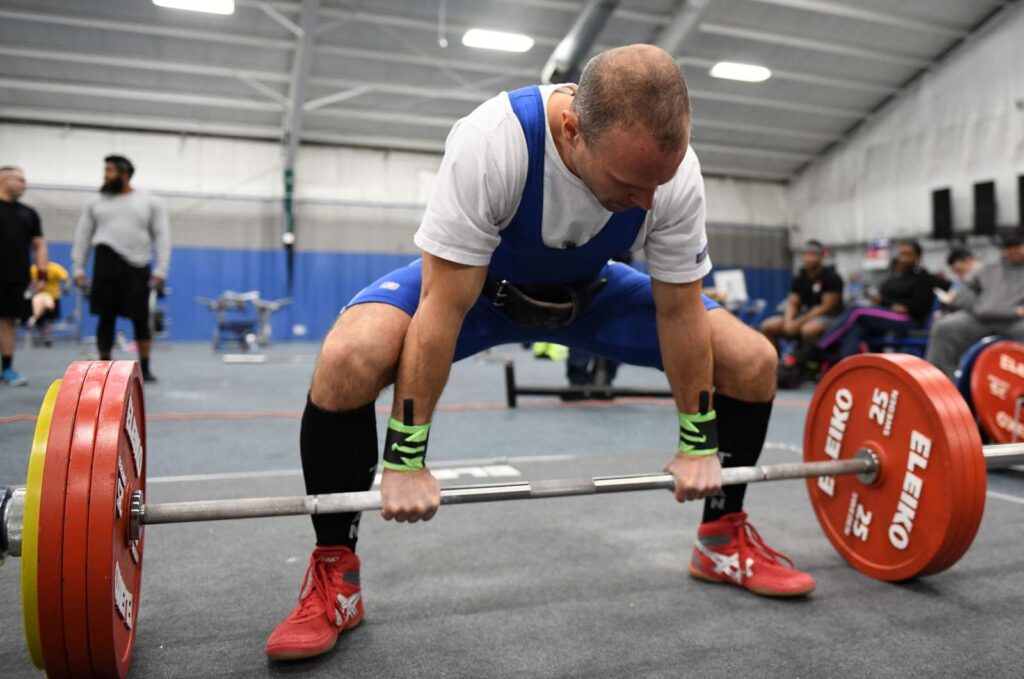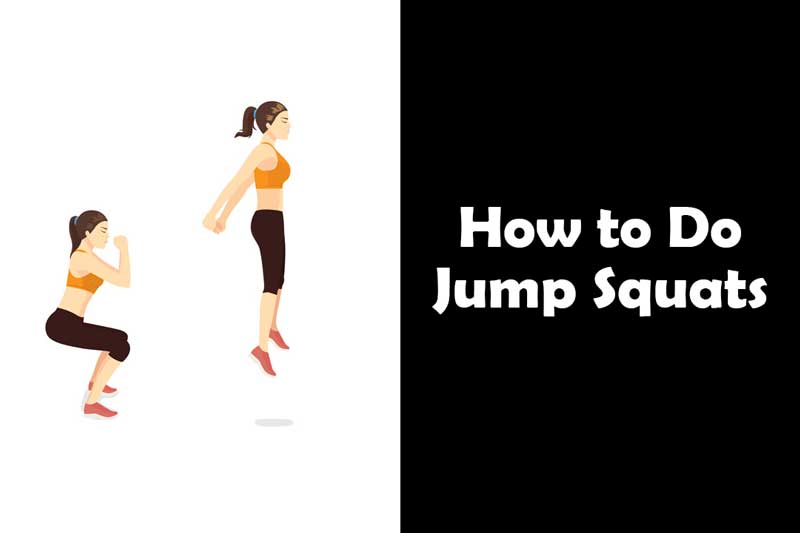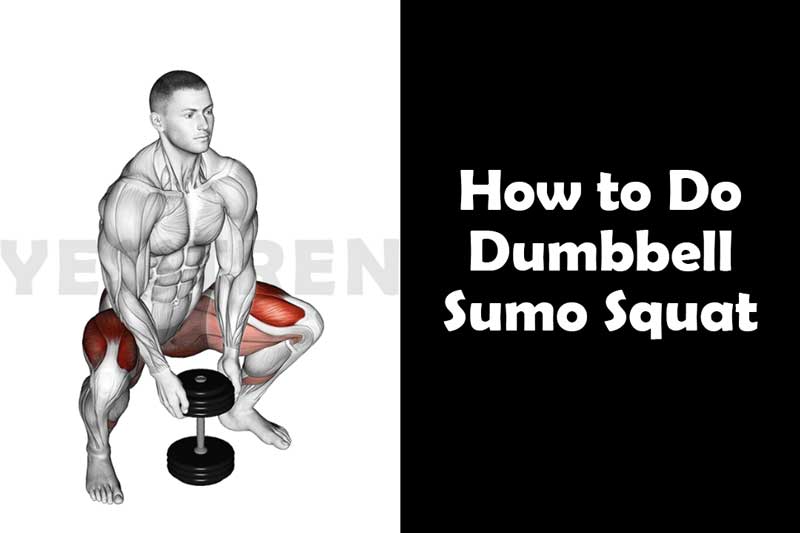Let’s talk about one of the most famous and one of the best exercises, deadlift. If you’re looking to build strength and target multiple muscle groups simultaneously, deadlifts are an excellent exercise to incorporate into your fitness routine.
Deadlifts primarily work your lower back, glutes, hamstrings, and core muscles. In this comprehensive guide, we will walk you through the proper technique and provide essential tips to help you master the deadlift exercise.
Understanding the Deadlift Exercise
Deadlifts are compound exercises that involve lifting a loaded barbell or weight from the ground to a standing position. It mimics the movement of lifting heavy objects in daily life, making it a functional exercise with numerous benefits.
Benefits of Deadlift
1) Full-Body Workout
Deadlifts engage multiple muscle groups simultaneously, making them a highly efficient exercise. The primary muscles worked during deadlifts include the erector spinae (lower back muscles), glutes, hamstrings, quadriceps, and core muscles. Additionally, deadlifts also activate secondary muscles such as the calves, forearms, and upper back muscles.
2) Strength and Muscle Development
Deadlifts are renowned for their ability to build overall strength and increase muscle mass. Since deadlifts engage large muscle groups, they stimulate the release of growth hormone and testosterone, both of which are essential for muscle growth and strength development. Regular deadlifting can lead to improved muscle definition and enhanced muscular strength throughout your body.
3) Improved Posture
Deadlifts can have a positive impact on your posture. By strengthening the muscles in your lower back, particularly the erector spinae, deadlifts help improve spinal alignment and reduce the risk of back pain. As you develop a stronger core and back, you are more likely to maintain a proper upright posture throughout your daily activities.
4) Enhanced Grip Strength
Deadlifts challenge your grip strength significantly. As you lift heavier weights, your grip strength must improve to maintain a secure hold on the barbell. A stronger grip not only helps you in deadlifting but also carries over to other exercises such as pull-ups, rows, and carrying heavy objects in your daily life.
5) Fat Burning
Deadlifts are a compound, high-intensity exercise that can contribute to calorie burning and weight loss. As you perform deadlifts, you engage multiple muscle groups simultaneously, which requires a considerable amount of energy. This increased energy expenditure can help create a calorie deficit, aiding in fat burning and weight management.
6) Functional Fitness
Deadlifts mimic the movement of lifting heavy objects from the ground, making them a functional exercise. By performing deadlifts, you are training your body to handle real-life situations that involve lifting and carrying heavy loads. This can translate into improved strength and efficiency in your daily activities, such as moving furniture, lifting groceries, or performing manual labor.
7) Bone Health and Joint Stability
Deadlifts are considered a weight-bearing exercise, which means they place stress on your bones, promoting bone density and strength. By incorporating deadlifts into your fitness routine, you can potentially reduce the risk of osteoporosis and improve bone health. Additionally, deadlifts strengthen the muscles surrounding your joints, contributing to joint stability and reducing the likelihood of injuries.
Deadlift Muscles Worked
When performing the deadlift, you’re not just lifting a heavy weight off the ground. You’re engaging multiple muscles throughout your body to execute the movement with power and control. Let’s take a closer look at the primary muscles worked during deadlifts:
1) Erector Spinae
The erector spinae muscles, located on either side of the spine, play a crucial role in maintaining an upright posture and stabilizing the spine during deadlifts. These muscles, consisting of the iliocostalis, longissimus, and spinalis muscles, work together to extend the spine and prevent it from rounding forward.
2) Glutes
The gluteal muscles, including the gluteus maximus, medius, and minimus, are heavily involved in deadlifts. They are responsible for hip extension, which is a key movement in lifting the weight off the ground. The glutes also provide stability and contribute to maintaining proper alignment of the pelvis and spine during the lift.
3) Hamstrings
The hamstrings, located on the back of the thigh, are engaged during the hip extension phase of the deadlift. These muscles, including the biceps femoris, semitendinosus, and semimembranosus, assist in pulling the weight upward. They also help stabilize the knees and control the descent of the barbell.
4) Quadriceps
The quadriceps muscles, located on the front of the thigh, work isometrically to maintain knee extension throughout the deadlift movement. Although the primary focus is on the posterior chain muscles, the quads contribute to the overall stability and control of the lift.
5) Core Muscles
The core muscles, including the rectus abdominis, obliques, and transverse abdominis, play a vital role in deadlifts. They provide stability to the spine and help maintain proper posture throughout the movement. A strong core is essential for transferring force from the lower body to the upper body during the lift.
6) Forearms
The muscles of the forearms, including the flexor and extensor muscles, are engaged to maintain a secure grip on the barbell during deadlifts. As you lift heavier weights, your grip strength is challenged, requiring the forearm muscles to work harder to hold onto the bar.
7) Trapezius and Rhomboids
The trapezius and rhomboid muscles of the upper back play a supportive role during deadlifts. They help stabilize the scapulae (shoulder blades) and maintain proper posture throughout the movement, preventing the shoulders from rounding forward.
While these muscles are the primary movers in deadlifts, it’s important to note that other muscles, such as the calves, deltoids, and upper back muscles, also contribute to the overall stability and control of the lift.
Preparing for Deadlift: Equipment and Setup
Before diving into the deadlift, it’s essential to prepare your equipment and set up properly. Here’s what you need to do:
- Barbell and Plates: Ensure you have a sturdy barbell and weight plates appropriate for your fitness level.
- Proper Footwear: Wear flat-soled shoes or deadlift slippers to maximize stability and balance.
- Lifting Belt (Optional): Consider using a weightlifting belt if you’re lifting heavy loads to support your lower back.
- Barbell Position: Position the barbell on the floor, aligning it with the middle of your feet.
Proper Deadlift Form

To perform deadlifts with optimal form and reduce the risk of injury, follow these step-by-step instructions:
Stance and Grip
- Stand with your feet shoulder-width apart, with the barbell centered over your mid-foot.
- Then, bend down and grip the barbell just outside your legs. You can choose between an overhand grip (both palms facing you) or a mixed grip (one palm facing you, the other away).
Initial Position
- Lower your hips while keeping your chest up and maintaining a neutral spine.
- Engage your core, squeeze your shoulder blades together, and take a deep breath.
Execution
- Drive through your heels, lift the barbell off the ground while maintaining a straight back, and extend your hips and knees simultaneously.
- Keep the barbell close to your body throughout the movement.
- Once you reach the top position, pause momentarily, and then lower the barbell back to the ground in a controlled manner.
Proper Breathing Technique
- Inhale deeply before initiating the lift, and hold your breath during the lifting phase to stabilize your core.
- Exhale at the top position before starting the descent.
Common Mistakes to Avoid
- Rounding the back: Maintain a neutral spine throughout the movement to avoid excessive stress on your lower back.
- Jerking the weight: Lift the weight in a smooth, controlled manner to prevent injury.
- Using your arms: Focus on driving through your legs and engaging your glutes and hamstrings rather than relying on your arms.
Deadlift-Strength Relation
The deadlift exercise is closely associated with strength development. It is widely regarded as one of the most effective exercises for building overall strength.
The relationship between deadlifts and strength is multifaceted and can be understood from several perspectives:
1) Muscle Activation
Deadlifts engage multiple major muscle groups simultaneously, including the erector spinae (lower back), glutes, hamstrings, quadriceps, and core muscles. By targeting these large muscle groups, deadlifts stimulate significant muscle activation and recruitment. As a result, regular deadlift training leads to the development and strengthening of these muscles, which directly contributes to increased strength.
2) Central Nervous System (CNS) Activation
Deadlifts are a compound exercise that requires substantial CNS activation. When performing deadlifts, the CNS coordinates the contraction of various muscles, ensuring efficient force production. The CNS adapts and becomes more efficient with repeated deadlift training, leading to enhanced neural connections and improved strength output.
3) Hormonal Response
Deadlifts have been shown to elicit a significant hormonal response in the body. The exercise stimulates the release of testosterone, growth hormone, and other anabolic hormones, which are essential for muscle growth and strength development. Furthermore, these hormonal responses facilitate muscle protein synthesis, leading to greater muscle hypertrophy and increased strength over time.
4) Progressive Overload
Deadlifts allow for progressive overload, which is a fundamental principle of strength training. Progressive overload involves gradually increasing the intensity (weight), volume (repetitions and sets), or complexity of an exercise over time. With deadlifts, you can progressively increase the weight lifted, challenging your muscles and forcing them to adapt and grow stronger.
5) Transfer to Other Lifts and Activities
Deadlifts have a high transferability to other exercises and activities that require strength. The strength developed through deadlifting can carry over to various compound movements, such as squats, lunges, and overhead presses. Additionally, the functional nature of deadlifts, mimicking the movement of lifting heavy objects from the ground, improves overall strength for everyday activities and sports.
6) Improved Mind-Muscle Connection
Deadlifts require focus and concentration to maintain proper form and execute the movement effectively. As you become more proficient in deadlifting, you develop a better mind-muscle connection, allowing you to engage and activate the targeted muscles more efficiently. This improved mind-muscle connection translates into better strength gains and overall performance.
Deadlift Variations
To add variety to your workouts and target different muscle groups, you can incorporate various deadlift variations into your training routine. So, here are three popular options:
1) Sumo Deadlift

The sumo deadlift involves a wider stance and a grip inside your legs, targeting your inner thighs, glutes, and quads to a greater extent.
Many consider that sumo deadlifts are cheating, but just because they are easy doesn’t make it bad. It targets some some muscles that other deadlifts cannot.
2) Romanian Deadlift
The Romanian deadlift emphasizes the hamstrings and glutes. It involves a slight knee bend with the primary movement occurring at the hips.
3) Trap Bar Deadlift
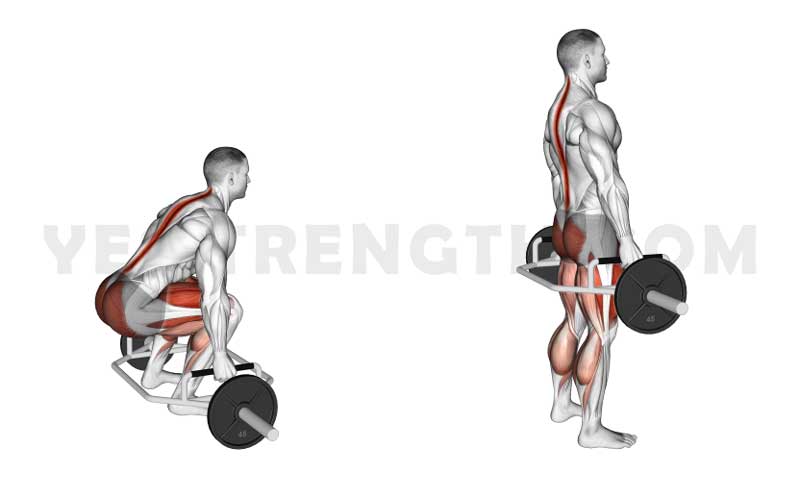
The trap bar deadlift utilizes a specialized bar that allows you to lift with a more neutral spine position. Also, it can be an excellent alternative for individuals with back issues or limited mobility.
Trap bar deadlifts are also a bit easier than the traditional deadlifts but are an excellent options for those who want a change in their routine and also good for beginners.
Incorporating Deadlifts into Your Workout Routine
To optimize your deadlift training, consider the following tips:
- Warm-up: Always warm up with dynamic stretches and lighter weight sets to prepare your body for the exercise.
- Starting Weight: Begin with a weight that allows you to maintain proper form and gradually increase the load as you gain strength and confidence.
- Sets and Repetitions: Aim for 3-5 sets of 5-8 repetitions, resting for 2-3 minutes between sets.
- Frequency: Perform deadlifts once or twice a week, allowing adequate time for recovery between sessions.
- Progressive Overload: Continually challenge your muscles by gradually increasing the weight or reps over time.
How to Progress in Deadlifting
To continue challenging your muscles and making progress in your deadlifting journey, follow these strategies:
- Progressive Overload: Gradually increase the weight lifted or the number of repetitions to keep pushing your limits.
- Vary Rep Ranges: Incorporate different rep ranges (e.g., lower reps with heavier weights or higher reps with lighter weights) to stimulate muscle growth and strength development.
- Deadlift Variations: Introduce the different deadlift variations we discussed earlier to target specific muscle groups and add variety to your training.
Why do some people get injuries during deadlift?
Ah, the glorious deadlift. It’s a fantastic exercise that can transform mere mortals into strong, resilient beings. But hey, let’s talk about why some people manage to turn this empowering movement into a recipe for disaster. Brace yourselves for a sarcastic journey through the land of deadlift injuries!
1) Ignorance
Who needs knowledge and proper technique, right? Just walk up to that barbell with wild abandon and yank it up without a care in the world. Who cares about maintaining a neutral spine or engaging your core? Ignorance is bliss, my friends!
2) Ego Lifting
Oh, the sweet allure of ego lifting! Forget about gradually increasing the weight and building strength over time. Let’s slap on more plates than we can handle and give our egos a nice massage. Because nothing says “injury waiting to happen” like attempting to deadlift a weight that would make Hercules flinch.
3) Curved Spines
Straight backs are overrated, right? Embrace the elegance of a severely rounded spine as you lift that barbell. Who needs those pesky vertebral discs anyway? Let them have a party as they herniate and cry out in agony.
On a serious note, never neglect this point, always keep your spine errect. Reduce the weight further if it needs to be.
4) The Jerk Movement
Jerking the weight up like you’re summoning Thor’s hammer is the epitome of finesse and grace. Forget about smooth, controlled movements. Make it a herky-jerky extravaganza and watch as your joints and connective tissues scream in horror.
5) Forgetting About Warm-ups
Warm-ups? Who needs those when you’re ready to conquer the world with your deadlift prowess? Just dive headfirst into heavy lifting without bothering to prepare your body for the impending onslaught. Your muscles and tendons will surely thank you with a symphony of tears and strains.
6) Complete Disregard for Recovery after deadlift
Pfft, rest days? Overrated! Recovery is for the weak. Deadlift every single day without allowing your body to recover and repair itself. Ignore the warning signs of fatigue and let your overworked muscles and nervous system have a good laugh at your expense.
Never do this mistake. Always give time to every muscle in your body to rest.
7) Imitation Game
Why bother seeking guidance from experienced lifters or trainers when you can imitate the worst form you’ve ever seen? Copy those YouTube tutorials featuring people who have clearly mastered the art of injury-inducing deadlifts. Who needs safety and common sense when you can emulate the perfect recipe for disaster?
Please note that the above points are meant to be sarcastic and highlight common mistakes people make while deadlifting. In all seriousness, proper technique, knowledge, gradual progression, and listening to your body are essential for safe and effective deadlifting. Always prioritize your safety, seek guidance from professionals, and enjoy the benefits of deadlifts without becoming a cautionary tale. Stay strong and lift smart! Say Yes to Strength.
Safety Considerations While Doing Deadlift
While deadlifts can be highly beneficial, it’s crucial to prioritize safety. Here are some essential safety considerations:
- Start with Proper Form: Master the technique before adding significant weight to avoid injuries.
- Use a Spotter: If you’re lifting extremely heavy weights, consider having a spotter or training partner for added safety.
- Listen to Your Body: Pay attention to any pain or discomfort and consult a fitness professional or healthcare provider if necessary.
Deadlift Tips for Beginners
- Seek Professional Guidance: Consider working with a certified personal trainer to learn proper deadlift form and receive personalized guidance.
- Start Light: Begin with lighter weights and focus on mastering the technique before progressing to heavier loads.
- Engage Your Core: Maintain a tight core throughout the movement to support your spine and enhance stability.
- Practice Consistency: Deadlift regularly to build strength and improve your technique gradually.
- Patience and Persistence: Deadlifting requires time and practice. Be patient, stay consistent, and focus on steady progress.
Conclusion
Deadlifts are a highly effective exercise for building strength, developing muscle mass, and improving overall fitness.
By following the proper form, incorporating variations, and progressing gradually, you can reap the benefits of deadlifts while minimizing the risk of injury.
Remember to always prioritize safety, listen to your body, and seek professional guidance if needed.
Frequently Asked Questions (FAQs)
1) Is deadlifting suitable for beginners?
Absolutely! Deadlifting can benefit individuals of all fitness levels. However, beginners should focus on learning proper form, starting with lighter weights, and gradually progressing over time.
2) Should I use a weightlifting belt while doing deadlift?
While a weightlifting belt can provide additional support to your lower back, it’s not necessary for everyone. Beginners can initially focus on building core strength and maintaining proper form without relying on a belt. If you decide to use one, ensure it fits correctly and doesn’t impede your movement.
3) Can deadlift cause back pain?
When performed with proper form and appropriate weight, deadlifts are generally safe and can help strengthen the back muscles, reducing the risk of back pain.
However, incorrect technique or excessive weight can lead to strain or injury. It’s crucial to prioritize proper form and listen to your body.
4) How often should I perform deadlifts?
The frequency of deadlift training depends on various factors, including your fitness level, recovery capacity, and overall training program. As a general guideline, beginners can start with 1-2 deadlift sessions per week, allowing sufficient rest between sessions for recovery.
5) Are there any alternatives to deadlift?
Yes, if deadlifts are not suitable for you due to specific circumstances or limitations, there are alternative exercises that target similar muscle groups. Some alternatives include kettlebell swings, hip thrusts, and glute bridges. Consult with a fitness professional to determine the best alternatives for your specific needs and goals.
Say Yes to Strength! Peace.

